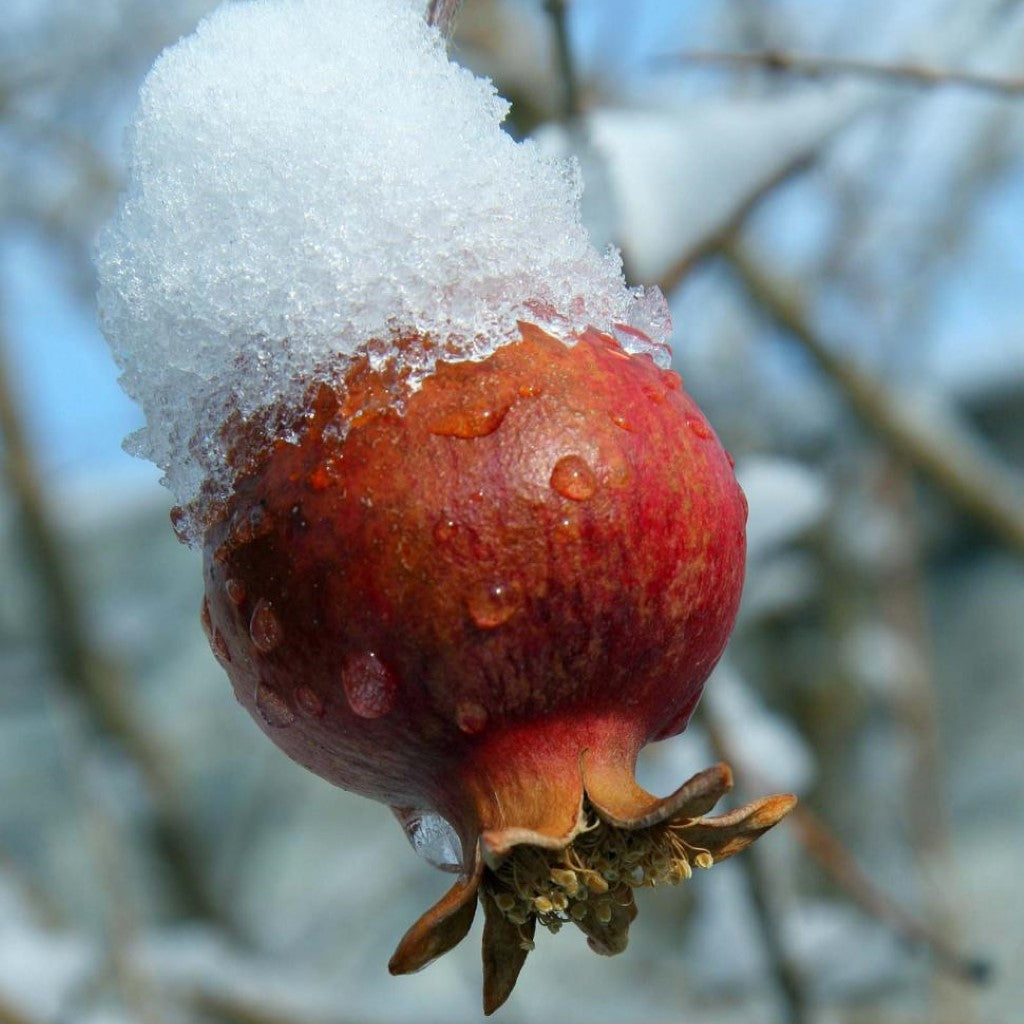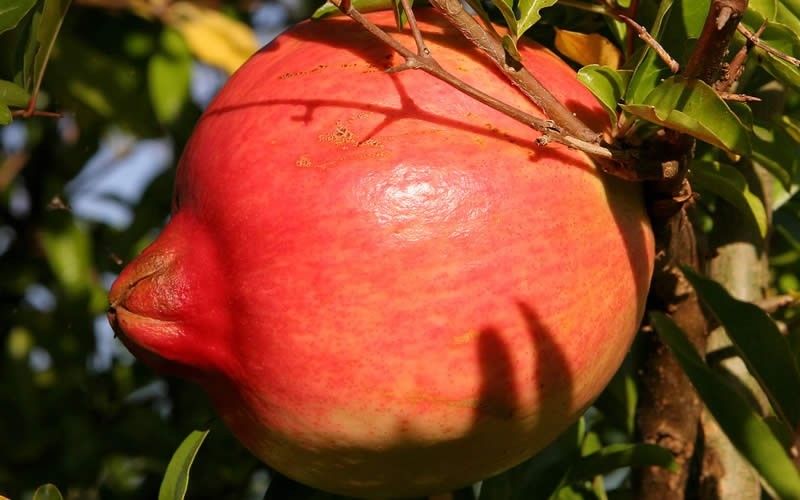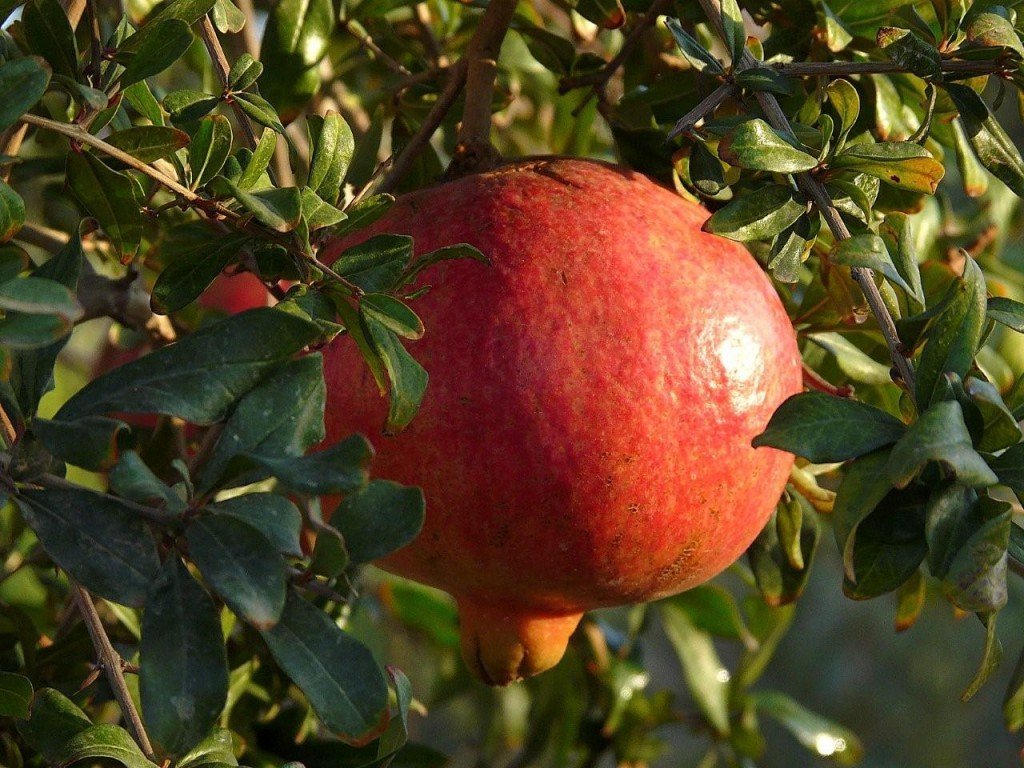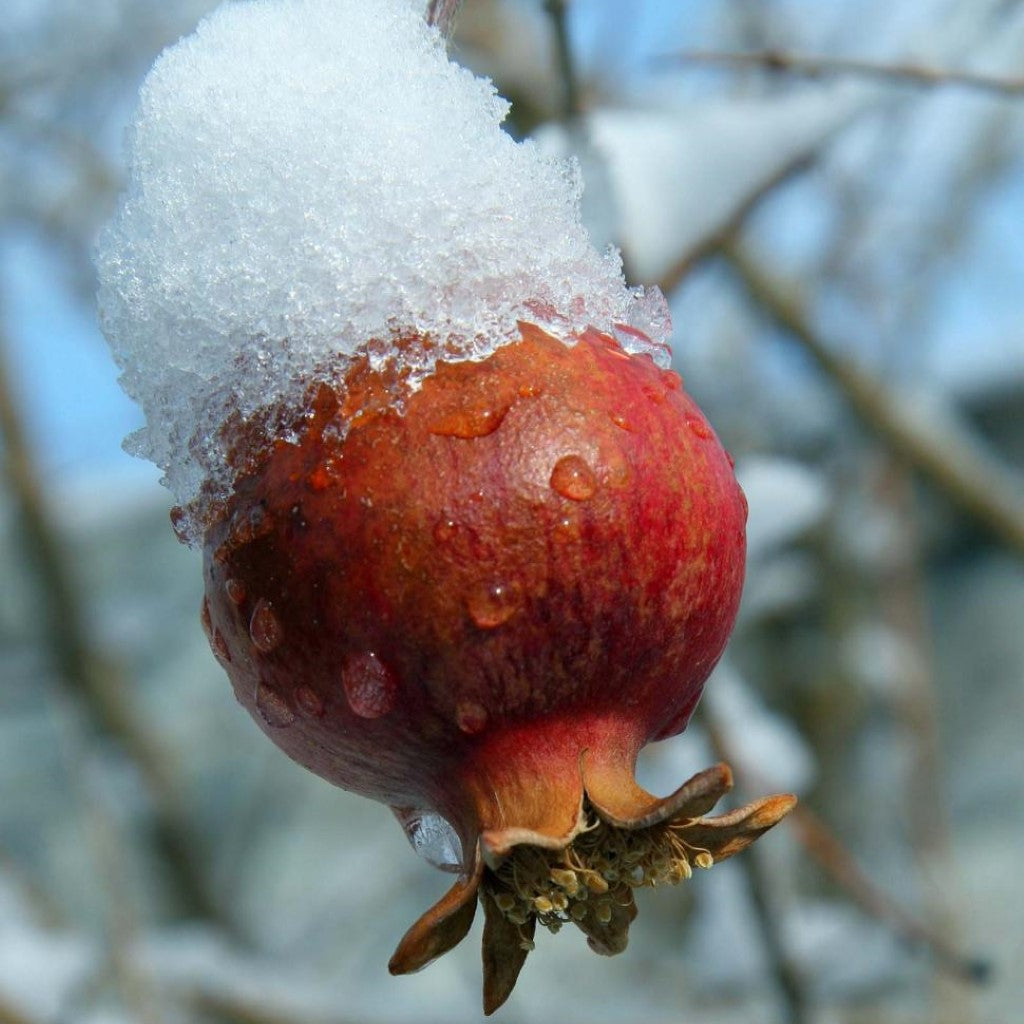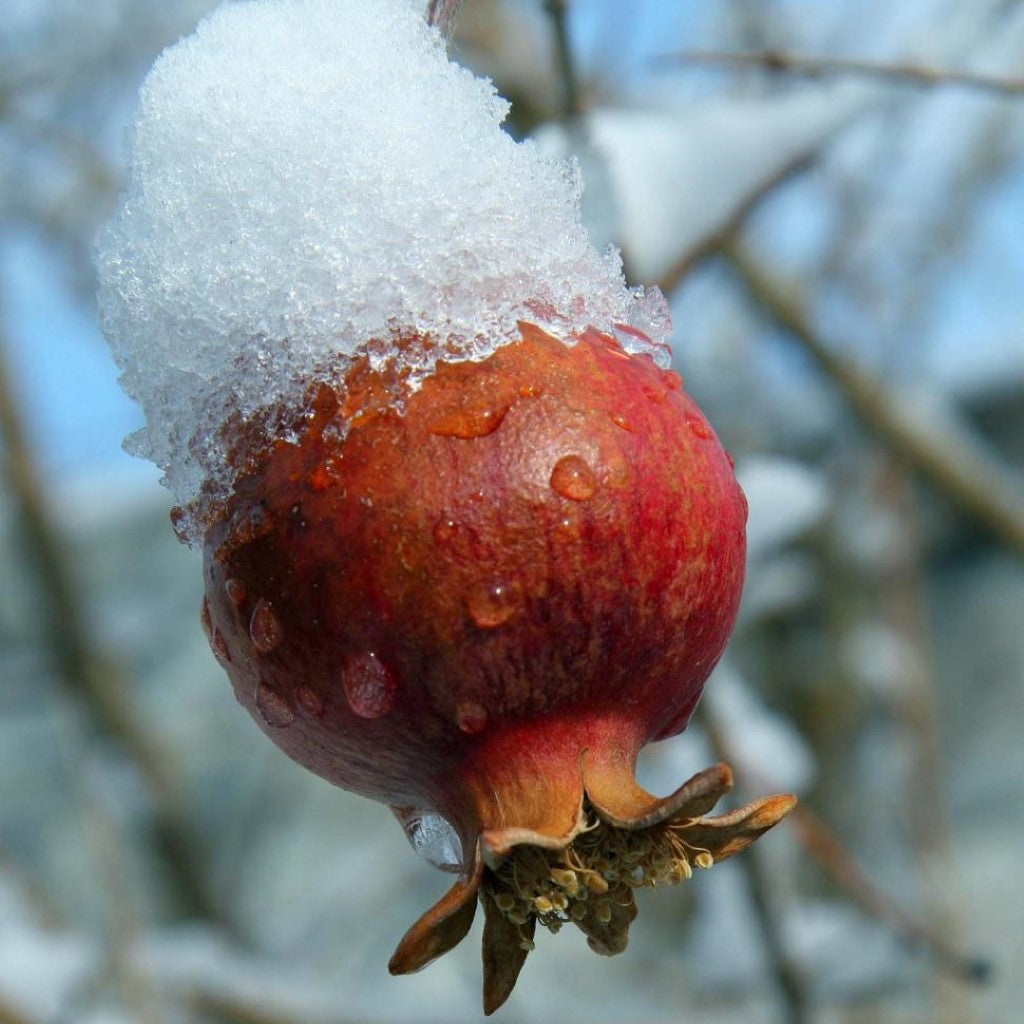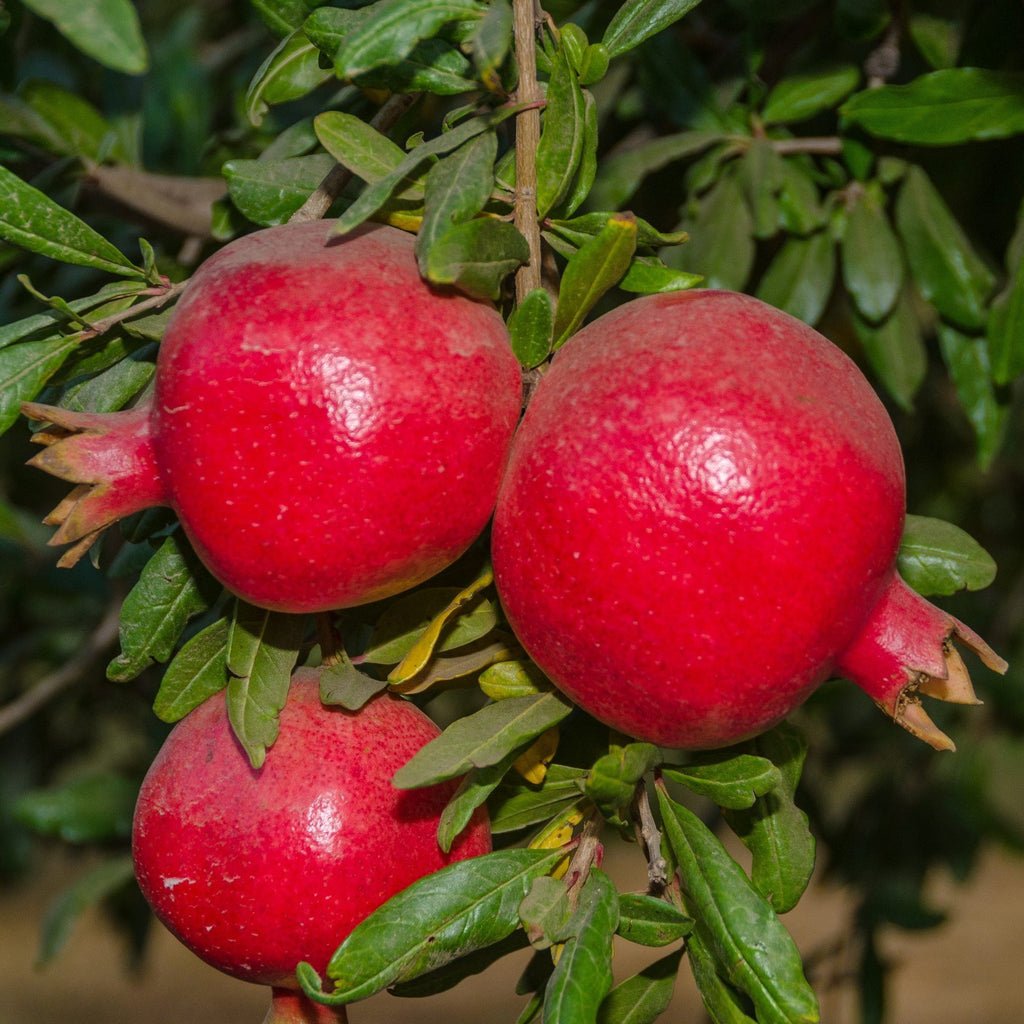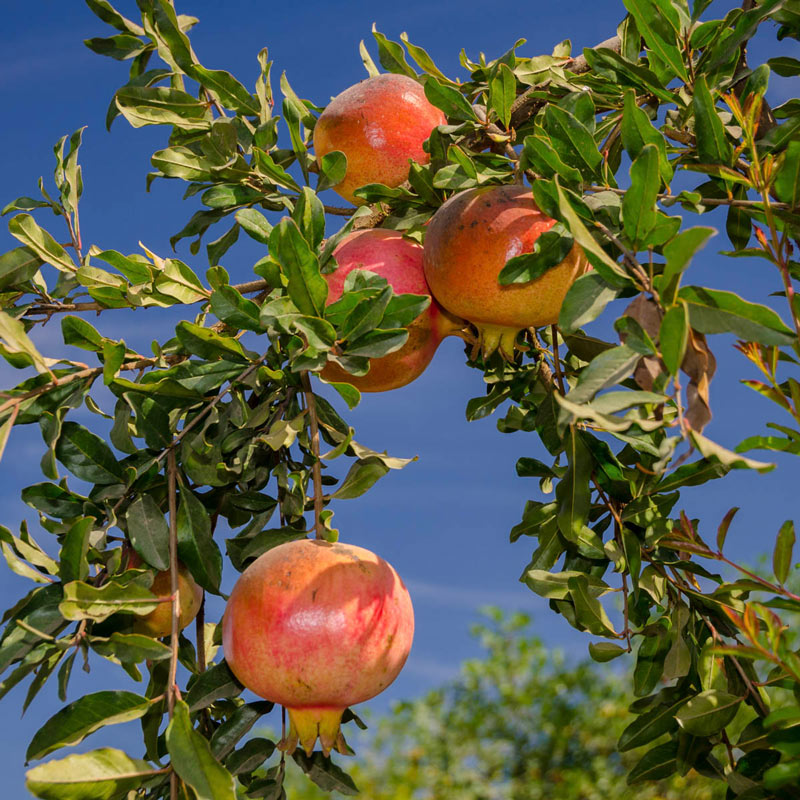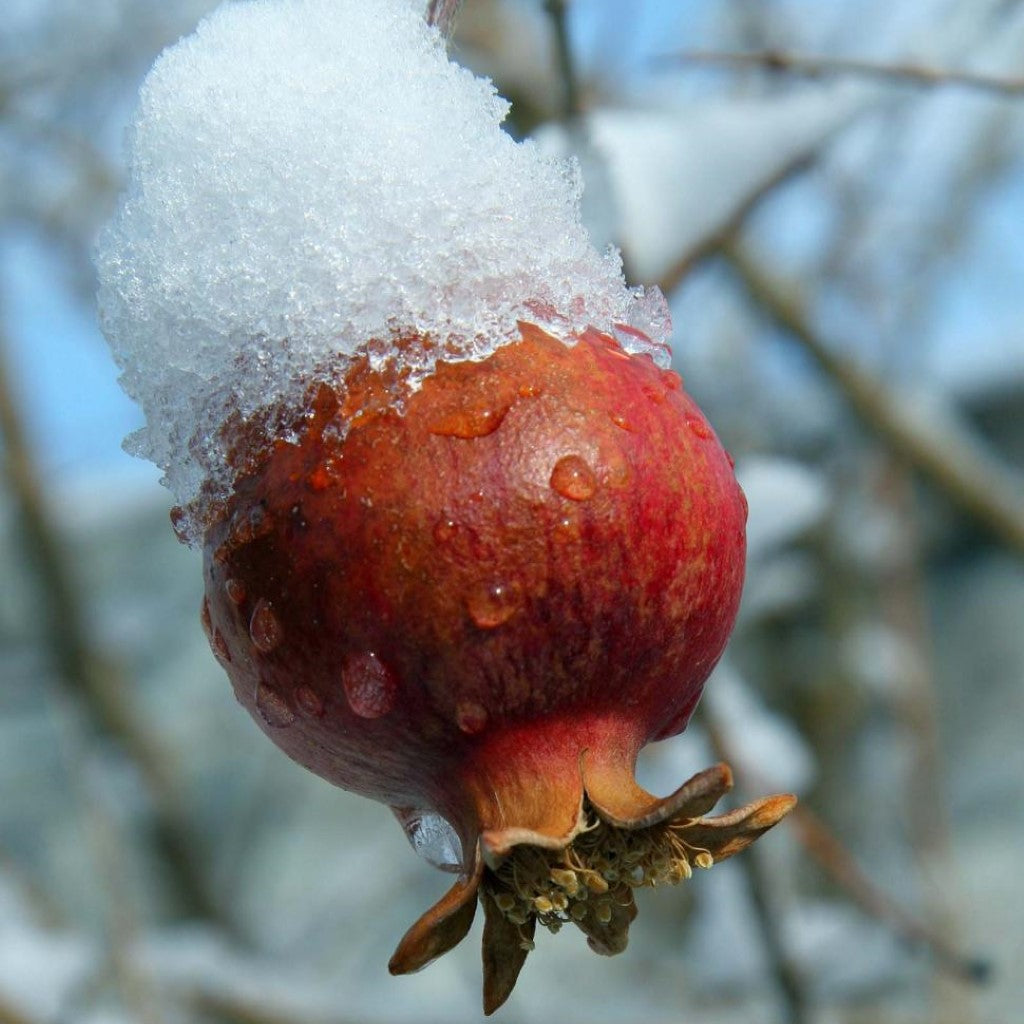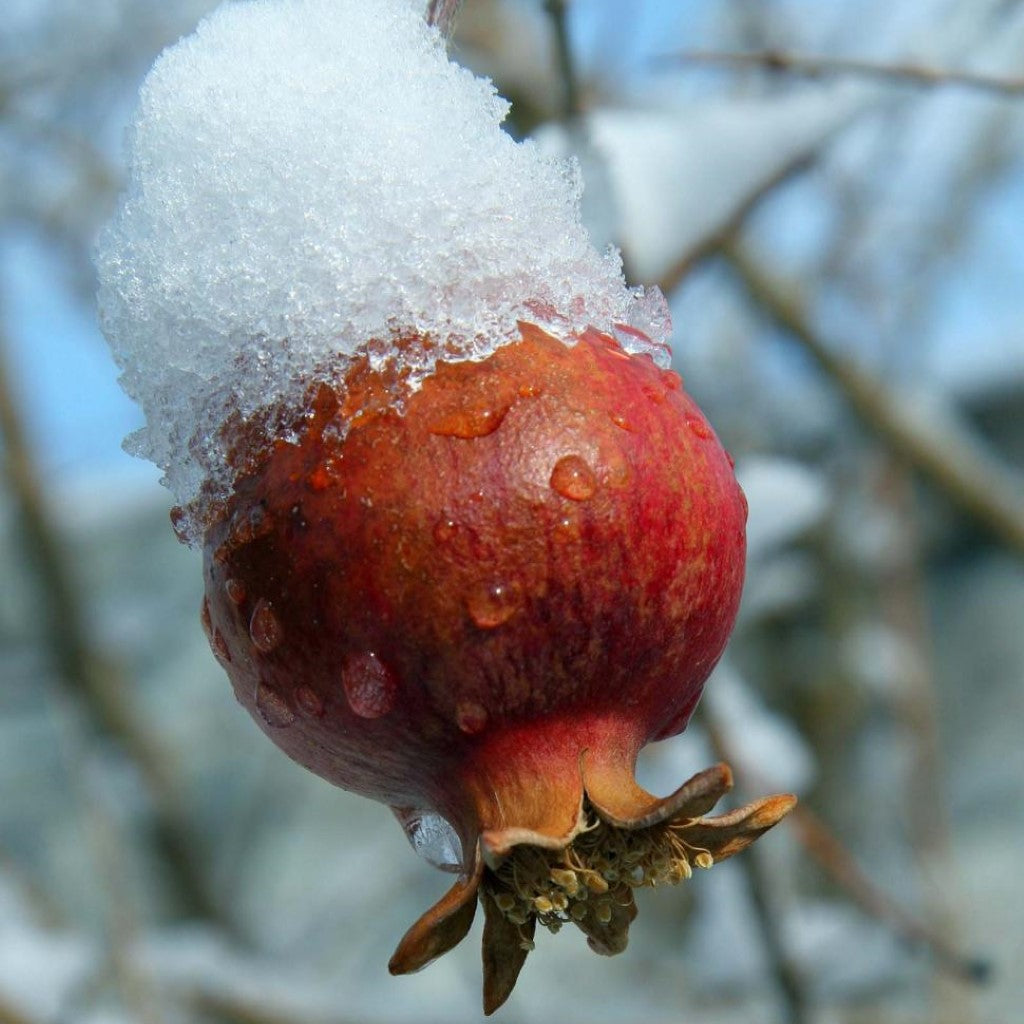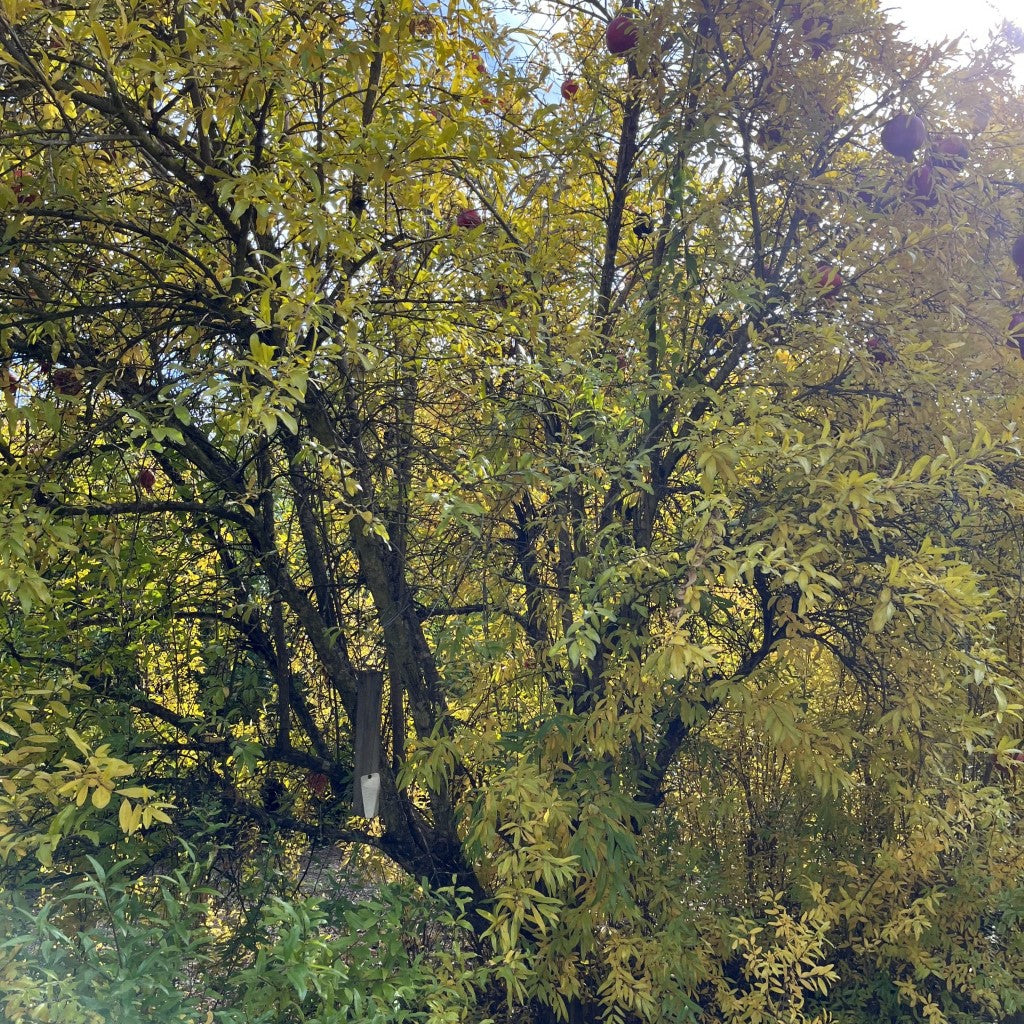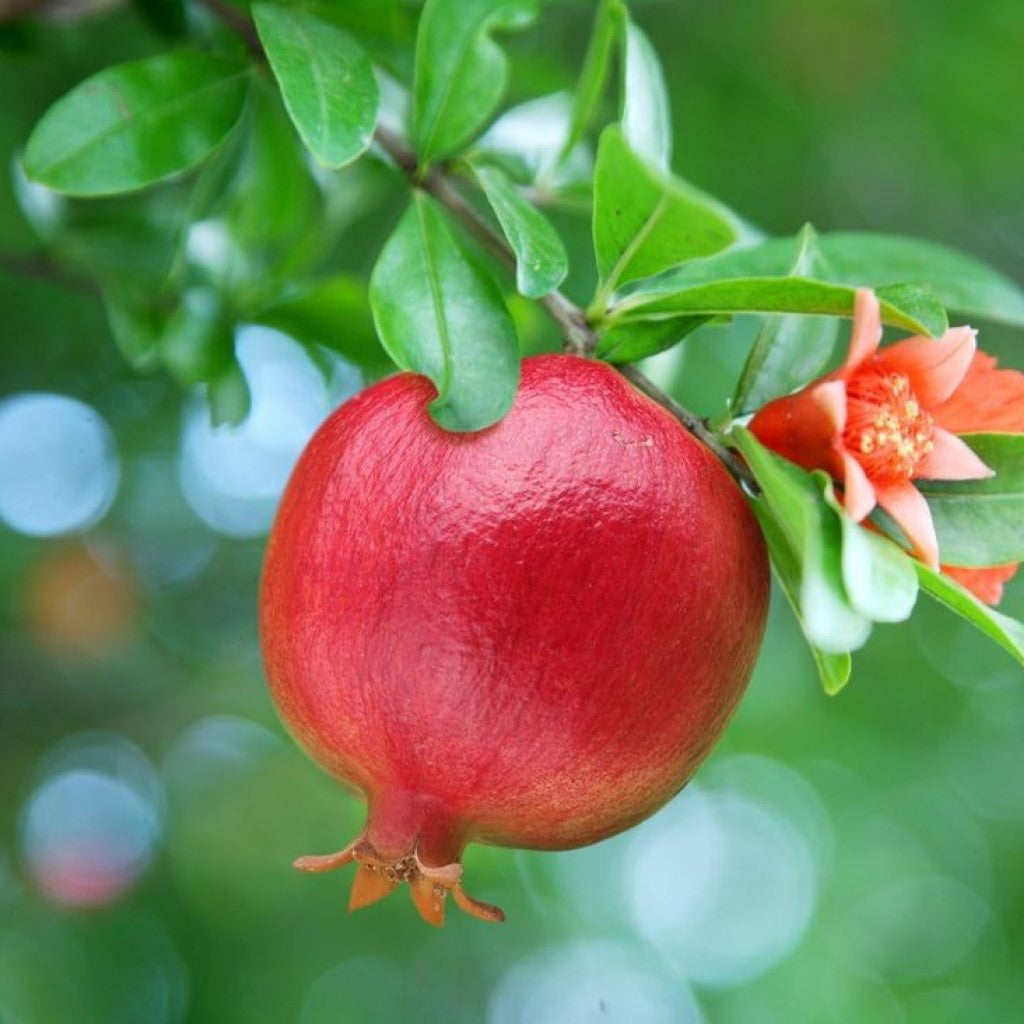Shop the always-in-trend pomegranate trees available at Pixies Gardens! We have a variety of them for sale, so you can add the delicious taste and beauty of pomegranates to your garden.
If you’re searching 🔎, “Where can I find a pomegranate tree for sale near me?”, we’ve got you covered with that too. With our online store, you can buy a pomegranate tree from the comfort of your home and have it delivered right to your doorstep.
For those who appreciate the art of bonsai, we offer the pomegranate bonsai tree. These miniature trees 🌿 are a testament to the beauty of nature and the patience of cultivation. They are also a unique and thoughtful gift for any occasion.
Whether you are looking for a specific variety or need advice on what would grow best in your area, our team of experts is here to help!
📖 History & Origin
Pomegranate trees originated in ancient Persia, but people have been cultivating them throughout the Mediterranean region for centuries. The scientific name for pomegranate is Punica granatum.
Spanish settlers brought them to California in 1769, and their popularity has skyrocketed since then because of their delicious taste and numerous health benefits.
🌳 Optimal Conditions for Cultivating Pomegranate Trees
The harvest season for pomegranates typically occurs from late summer to early fall, although specific timing can vary depending on the variety and growing conditions. It's important to monitor the fruit for ripeness, as pomegranates do not ripen further after harvesting. Further information when you buy a pomegranate tree for sale:
|
Parameter |
Details |
|
Family |
Lythraceae |
|
Growth Habit |
Deciduous shrub or small tree |
|
Height |
Typically 6 to 10 meters (20 to 33 feet) |
|
Lifespan |
12 to 20 years in optimal conditions |
|
Hardiness Zones |
USDA Zones 8 to 11 (can tolerate some frost) |
|
Temperature (F) |
Optimal growth between 68°F to 86°F (20°C to 30°C) |
|
Soil Requirements |
Well-drained, sandy loam to clay loam |
|
pH Range |
5.5 to 7.0 |
|
Sun Exposure |
Full sun |
|
Watering Needs |
Moderate, drought tolerant once established |
|
Pruning Requirements |
Regular pruning to maintain shape and remove dead wood |
|
Flowering Season |
Spring to early summer |
|
Flower Color |
Bright red-orange |
|
Fruit Ripening Season |
Late summer to fall |
|
Fruit Color |
Typically red, but can range from pink to purple |
|
Fruit Flavor |
Sweet-tart, juicy seeds surrounded by a bitter membrane |
|
Propagation Methods |
Seeds, cuttings, or grafting |
|
Pests and Diseases |
Susceptible to aphids, scale insects, fungal diseases |
|
Harvesting Time |
When the fruit's color turns from green to red and it makes a metallic sound when tapped |
|
Fertilizer Information |
Apply a balanced fertilizer (such as 10-10-10) in early spring before new growth begins. Repeat every 4 to 6 weeks during the growing season. Use a fertilizer specifically formulated for fruit trees. Avoid over-fertilization, as it can lead to excessive vegetative growth at the expense of fruit production. Get your own pomegranate tree for sale today! |
Each of our pomegranate trees is available at decent prices on our website. Check out our pomegranate tree for sale page for more information.
💮 Additional Characteristics & Information
- Pollination: Pomegranate trees are self-pollinating, but cross-pollination can improve fruit set and yield.
- Fruit Varieties: There are numerous cultivars of pomegranate, each with slightly different fruit characteristics, including size, color, and flavor.
- Uses: Pomegranate fruits are typically eaten fresh, juiced, or used in cooking, baking, and beverages. Additionally, pomegranate juice is prized for its health benefits.
- Health Benefits: Pomegranates are rich in antioxidants, vitamins C and K, and dietary fiber. Consuming pomegranate products may promote heart health, reduce inflammation, and offer other health benefits.
- Drought Tolerance: Pomegranate trees are relatively drought-tolerant once established, making them suitable for arid and semi-arid regions.
- Fruit Storage: Pomegranates can be stored for several weeks in a cool, dry place, but refrigeration can prolong their shelf life.
-
Commercial Cultivation: Pomegranates are commercially cultivated in various countries around the world, with major producers including Iran, India, and the United States (California).
☀️ How to Grow Pomegranate Trees in Your Garden/Orchard?
Growing pomegranate trees brings not only lush foliage but also a harvest of vibrant, antioxidant-rich fruits, perfect for fresh snacking or adding to culinary creations. So why wait? Follow these steps to grow one of your own!
- Choose the Right Variety: Select a pomegranate variety suitable for your climate and space, considering factors like cold tolerance and size.
- Location and Sunlight: Plant your pomegranate tree in a location that receives full sunlight for at least 6-8 hours a day.
- Soil Requirements: Ensure well-drained soil with a pH level between 5.5 and 7.5. Sandy loam or loamy soils are ideal.
- Planting Time: Plant pomegranate trees in late winter to early spring when the soil is workable, and temperatures are mild.
- Planting Process: Dig a hole twice as wide and deep as the root ball. Place the tree in the hole, backfill with soil, and water thoroughly.
- Watering Needs: Provide regular watering, especially during the first year of growth. Once established, pomegranate trees are drought-tolerant but still benefit from occasional deep watering.
- Fertilization: Apply a balanced fertilizer in early spring before new growth begins. Avoid excessive nitrogen, as it can promote vegetative growth at the expense of fruit production.
- Pruning: Prune pomegranate trees to shape them, remove dead or diseased branches, and promote air circulation. Pruning is typically done in late winter.
- Pest and Disease Management: Keep an eye out for pests like aphids, whiteflies, and fruit flies. Use insecticidal soap or neem oil to control infestations. Prevent diseases such as root rot by ensuring proper drainage and avoiding overwatering.
- Harvesting: Pomegranates are typically ready for harvest in late summer to fall, depending on the variety. Harvest when the fruit has developed its characteristic color and makes a metallic sound when tapped. Cut the fruit from the tree rather than pulling it to avoid damaging the plant.
✨ Our Best-Selling Pomegranate Trees (Species)
Discover our HUGE selection of best-selling pomegranate trees for sale, including the sought-after Russian pomegranate and Parfianka pomegranate varieties. As a premier supplier of pomegranate trees for sale near you, Pixies Gardens takes pride in offering top-quality specimens that thrive in diverse climates.
The Russian pomegranate, known for its cold hardiness and large, sweet-tart fruits, is a favorite among home gardeners. Meanwhile, the Parfianka pomegranate delights with its exceptionally juicy, flavorful arils and stunning ornamental appeal. Boost your garden or orchard with these exceptional pomegranate trees, available now for purchase.
💡 Frequently Asked Questions (FAQs)
(Question 1): How long does it take for a pomegranate tree to bear fruit?
Answer: Typically, it takes approximately 2 to 3 years for a pomegranate tree to bear fruit after being planted. However, this timeline can vary depending on factors such as the tree's age, variety, growing conditions, and care provided. At Pixies Gardens, we offer a variety of pomegranate trees for sale, including the Russian Pomegranate and the Parfianka Pomegranate, which are renowned for their delicious fruits and vibrant blooms.
(Question 2): Do you need 2 pomegranate trees to produce fruit?
Answer: No, pomegranate trees are self-pollinating, meaning they can produce fruit on their own without needing a second tree for pollination. However, having multiple trees can increase fruit yields and potentially lead to larger fruits. Whether you are looking for a pomegranate tree for sale near you or considering adding one to your garden, Pixies Gardens offers a diverse selection of pomegranate trees for sale to suit your needs.
(Question 3): What is the best time of year to plant a pomegranate tree?
Answer: The best time to plant a pomegranate tree is in the spring, after the danger of frost has passed and the soil has warmed up. This allows the tree to establish its roots and acclimate to its unique environment before winter. Pixies Gardens provides pomegranate trees for sale, making it convenient to find the perfect tree for planting in your garden.
(Question 4): Are pomegranate trees easy to grow?
Answer: Yes, pomegranate trees are considered easy to grow, especially in regions with hot, dry climates. They are adaptable to a variety of soil types and can tolerate drought once established. Whether you are a seasoned gardener or just starting out, Pixies Gardens offers pomegranate trees for sale near you, along with expert guidance and tips for successful cultivation.




